healthy living/fitness
Balsamic Chicken And Jicama Slaw: A Perfect Match
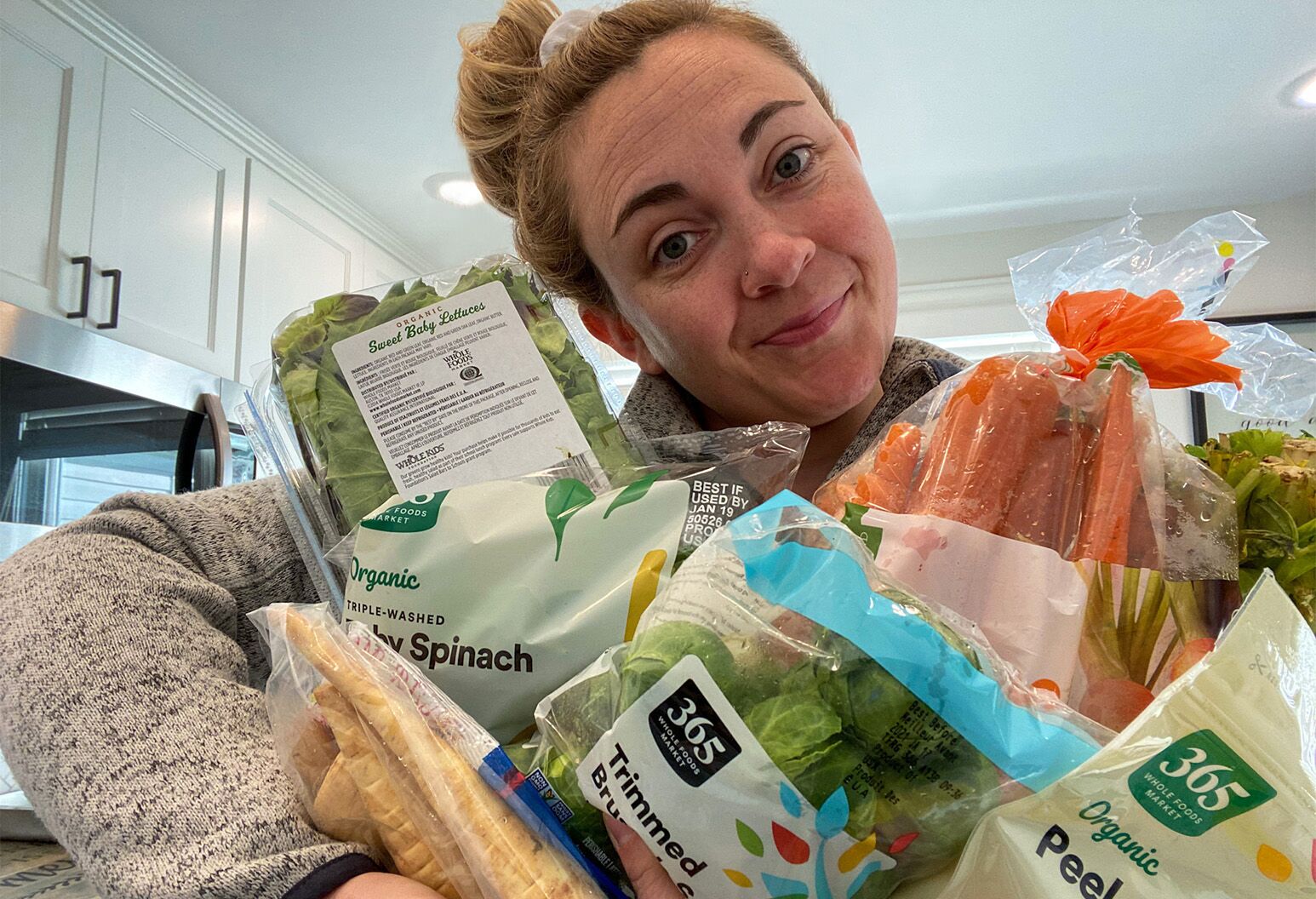
When Whole Foods recently built and opened a new location near my house, I felt like a kid on Christmas morning. I’ve always loved cooking, eating, and exploring new food markets—but as I perused the aisles, something unfamiliar caught my attention: a milk machine, making and bottling fresh almond and oat milk on the spot. I’d seen plant-based alternatives to things like meats and milks before, but now it was commanding my attention in an entirely new way.
Standing in awe in the middle of the dairy aisle, my interest was officially piqued.
I decided then and there to give plant-based eating a try, but didn’t have any idea where to start. So I enlisted the help of Plant Powered Metro New York (PPMNY)—a health empowerment organization dedicated to awareness and education of whole food, plant-based nutrition in disease prevention, treatment, and reversal—and signed on for their “14-day challenge” program. To help through the process, they paired me with a mentor and provided me with all the information I needed—from which foods to enjoy and which to avoid, some plant-based friendly dining options in my area, dates and times of their upcoming webinars, and recipes to help me get started.
If, like me, you’ve been interested in exploring a plant-based lifestyle, then read ahead to see what it’s like.
During the kickoff call for my jumpstart, my mentor, Wendy Sax, made a half-joking comment that I should get used to chopping vegetables, a lot of vegetables. We shared a chuckle, but aside from the obvious reality that I was embarking on a largely vegetable-centric lifestyle change, it led to a topic that proved immensely helpful: meal prep.
I’ve never been a religious meal prepper, but as I started on this journey I found that one of the keys to success was having plenty of good, plant-based-approved options prepped and available for any hunger pang: breakfast, lunch, dinner, and snacks.
Take breakfast, for example. I’m generally the type of person who loves having eggs and toast to start my day, so the thought of staring at that carton in the fridge each morning and not cracking a few eggs into a skillet seemed to go against my very nature. So instead I made a giant batch of steel cut oats to quickly grab and reheat for breakfast each morning during the week.
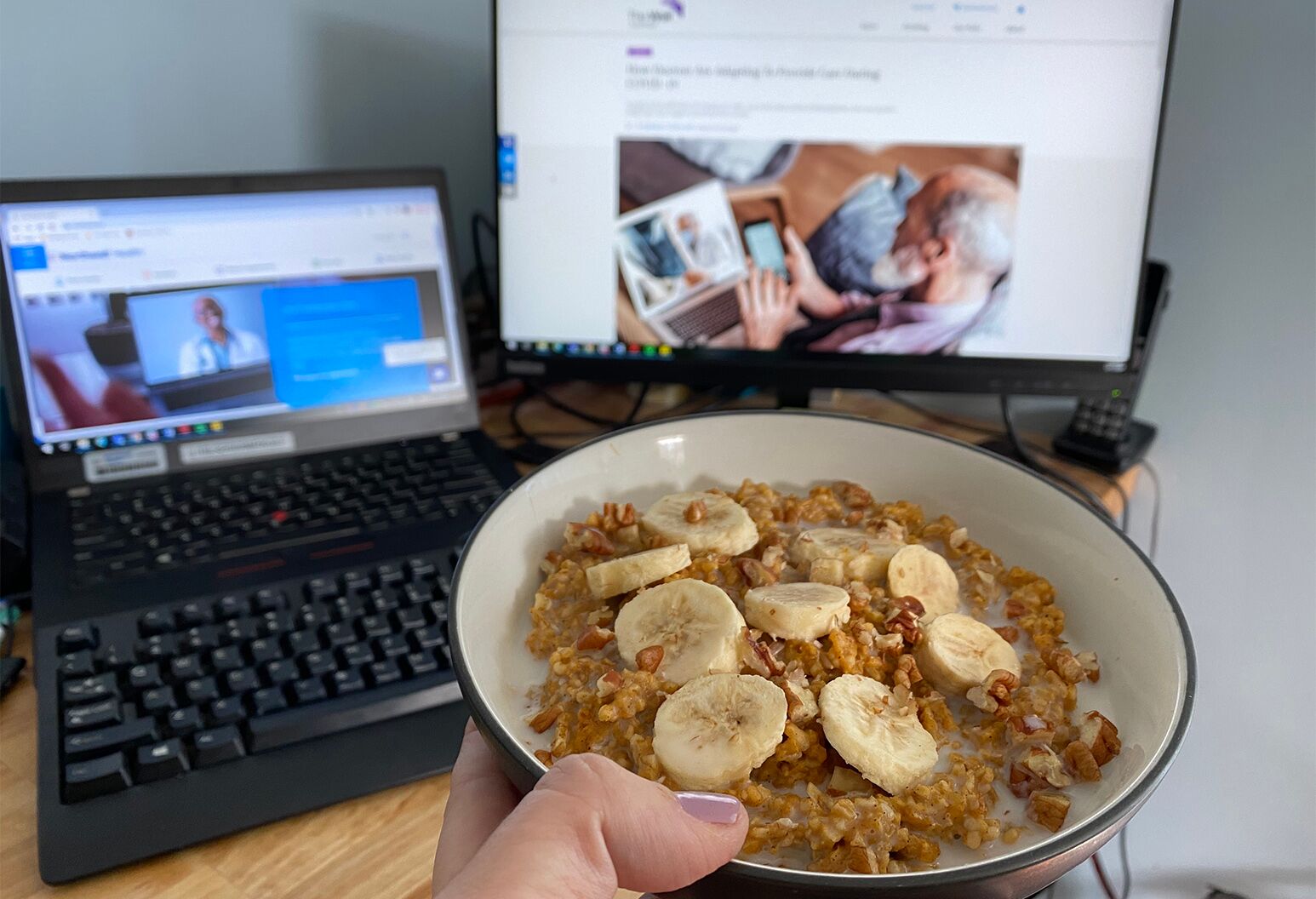
Likewise, I found it incredibly helpful (and easy) to create some of the more central components that go into most dishes, like vegetable stock. As I chopped, I tossed all my veggie scraps into a container on my counter. Once I had a few cups' worth stored up, I just dropped the contents into a slow cooker with water, put it on low, and viola! Twelve hours later I had vegetable stock with no salt or additives.
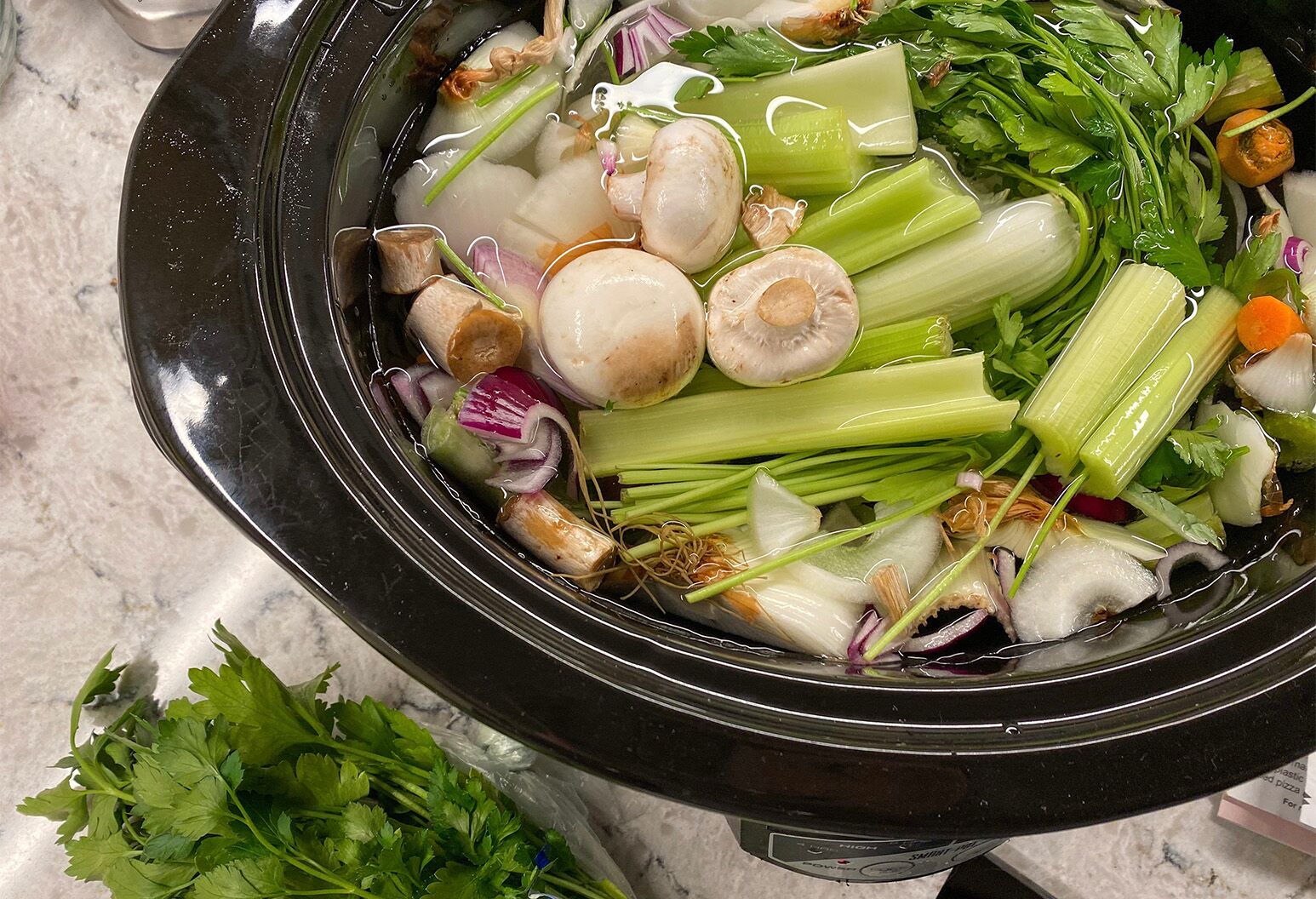
Don’t get me wrong, my body eventually adjusted to the change of diet and of removing ingredients like meat, dairy, salt, and oils from my daily rotation, but during those first few days I. Was. Hungry. It was partly a mental game and partly because I didn’t realize how much I’d need to eat to feel full. (Spoiler alert: You eat A LOT of veggies.)
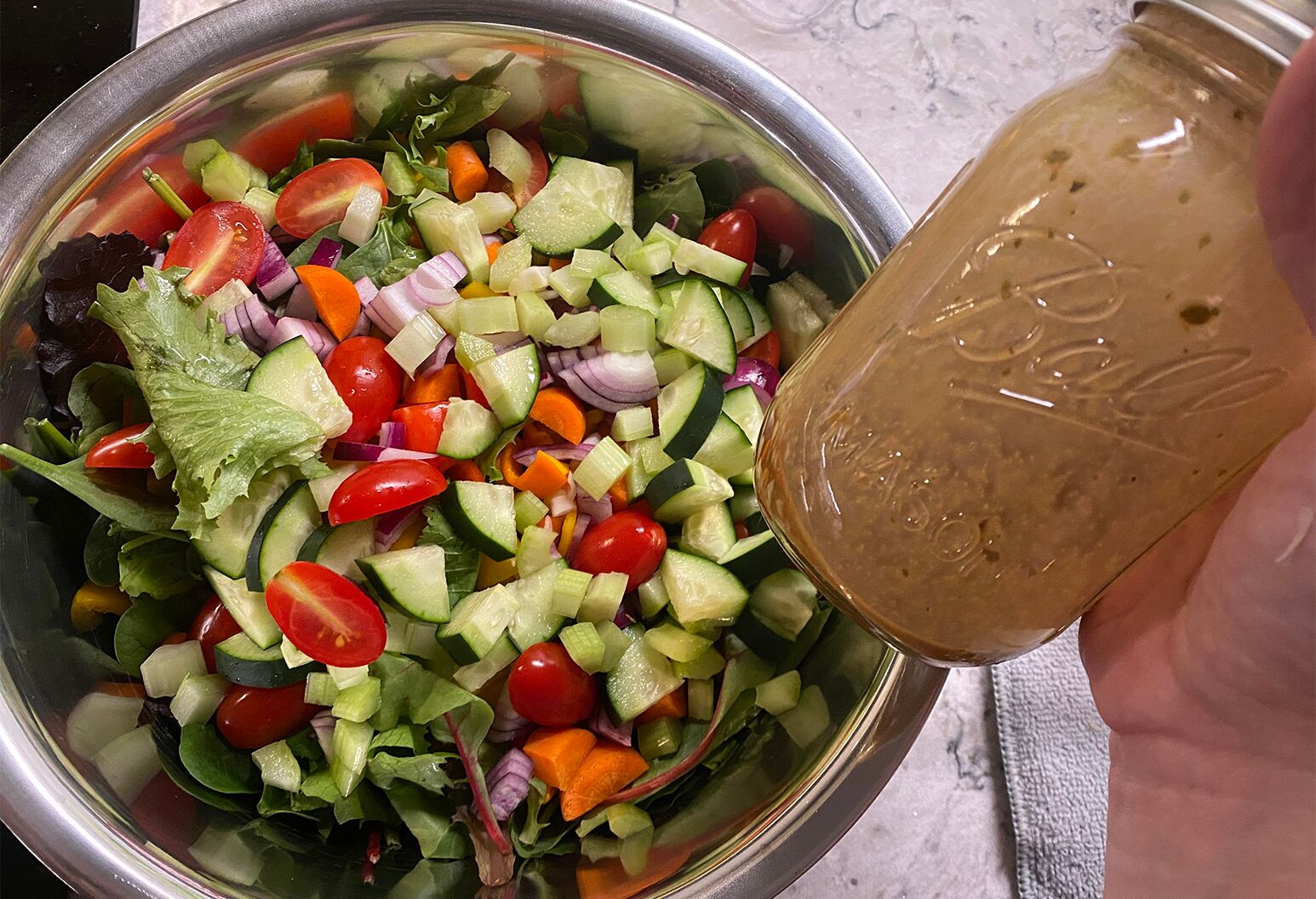
What’s more, those pangs of hunger were made worse by the fact that the other members of my household were not embarking on this journey with me. Instead of being able to focus solely on my own meals, lunch hours and dinners around the table were filled with the torturous scents of foods that were no longer on my menu. This is all the more reason why food prep and having options immediately available becomes key—especially if the other members of your household aren’t ready to make the transition to a whole food, plant-based lifestyle with you just yet.
My mentor and the folks at PPMNY suggested at the start that I take all non-compliant food out of my house to remove temptations as I transitioned to this new lifestyle. However, as my husband and 2-year-old daughter’s diets were not going to be changing with mine, clearing out my pantry and fridge just wasn’t an option.
Instead, I chose to make dedicated spaces for “safe” foods throughout my kitchen.
But, perhaps predictably, that didn’t keep my brain (and stomach) from thinking about all the foods I could have … you know, if I wanted. Pretty quickly, the bowl of leftover Halloween candy became a little devil sitting on my shoulder, whispering into my ear. Although it was an extreme test of my self-control, I just forced myself to make a cup of herbal tea, or take a sip of water, eat some carrots with homemade hummus, and power through.
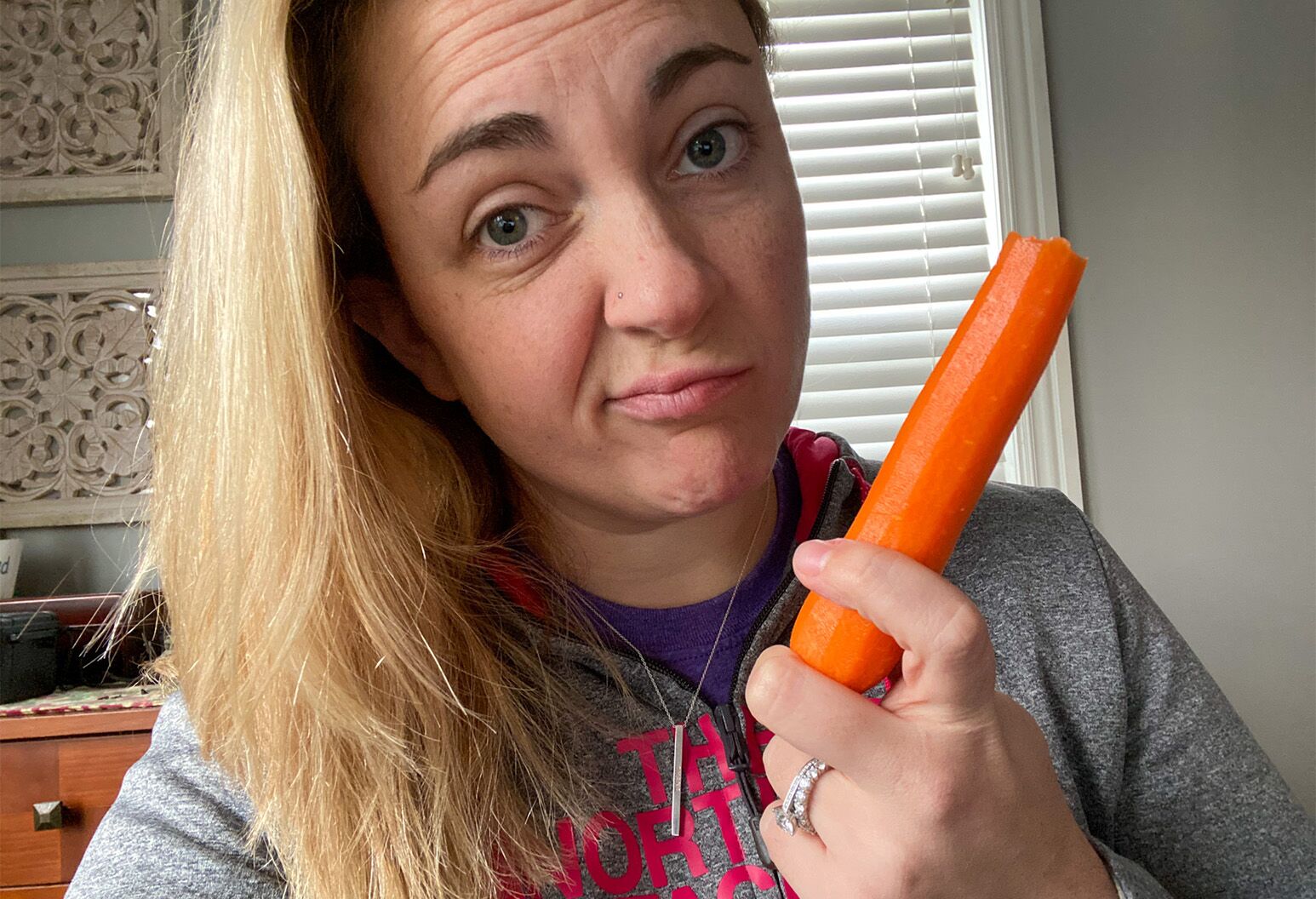
When my mentor advised me to ease into beans and gradually build up my serving sizes, I laughed. They’re just beans, I thought. I eat beans all the time—I’ll be fine. But in reality, it was not fine … not at all.
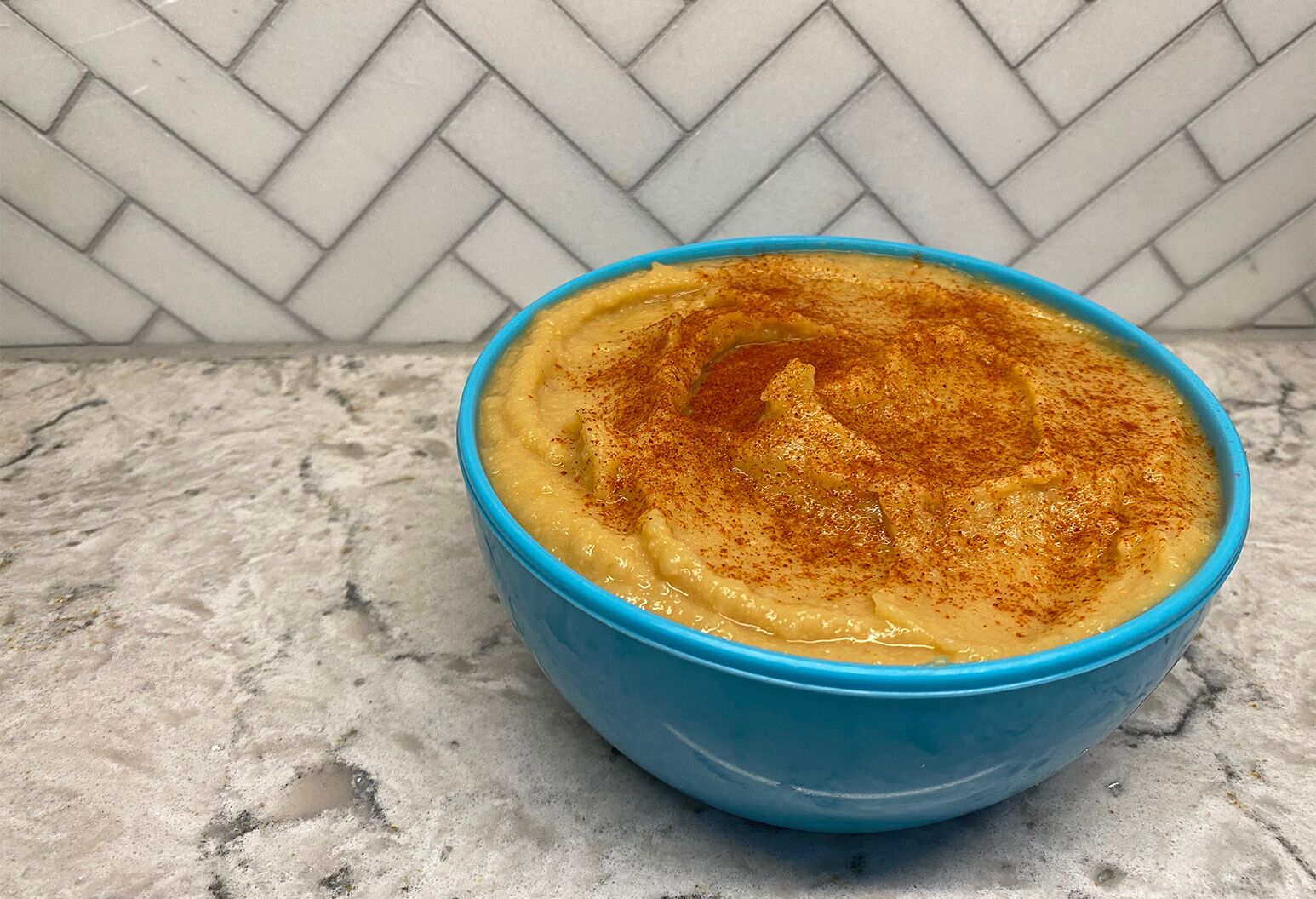
During that first week, I used black beans for a Mexican tofu breakfast dish, made a salt- and oil-free hummus for snacking, and batch cooked a spinach and navy bean soup. I felt so accomplished and proud of setting myself up for success—and then the predictable happened.
My husband even teased me with childhood rhymes: Beans, beans, they’re good for your heart—the more you eat, the more you … well, you get the picture.
From there on, my stomach and I decided to take a more measured approach to beans.
Through PPMNY’s program, there are certain foods that are either off-limits or that are recommended to be enjoyed “sparingly,” such as salt and oils. And while I was largely able to shift my diet, I found it was easier to stay on track if I could customize my path to a plant-based lifestyle around my actual life.
Take, for example, a batch of jarred garden-grown tomato sauce that my husband and I had made and canned over the summer. We had used a few tablespoons of oil and roughly 1 to 2 teaspoons of salt for a batch that yielded five jars of sauce.
While it might not be entirely compliant with the jump-start plan, it was compliant with my life as a busy mom to a young child who might not always have time to make a new oil- and salt-free batch of sauce. (And, it didn’t hurt that it probably wasn’t the worst “cheat” since it was homemade, not commercially processed, and had no added preservatives.)
On day four, my daughter declared her food was “too hot” to eat. Without even thinking, I took a piece from her plate and popped it into my mouth to check if it was, or if she was being a dramatic 2-year-old. It wasn’t until I was mid-chew that I realized the chicken quesadilla in my mouth was not only not too hot, but also definitely not friendly to my new lifestyle.
A pang of guilt instantly washed over me and I wondered if this would derail all my hard work.
Instead, I texted Wendy, who reassured me that slip-ups happen to everyone, and that if anything, I was just being a good mom and not to be too hard on myself. And it’s that support, whether it comes from a mentor, family member, or friend, that can mean so much in those early days of making such a drastic shift in your life.
Look, I did not start this journey with the sole intention of losing weight. I’m someone who accepts myself and my body as it is, but I also understand that making efforts to improve my overall health might also come with the added benefit of having my pants fit a little bit looser.
And while I don’t necessarily want to shout my weight from the rooftops (a lady never tells, after all), I will say that at the end of the two weeks I saw a smaller number staring back at me from the scale—to the tune of roughly eight pounds.
I suppose the biggest question is whether or not the plant-based lifestyle is one that I can see myself sticking to long term. And the answer is yes and no.
Overall, I certainly liked the way I felt, both mentally and physically, during the program. My head felt a bit less foggy, my clothes fit better, and I felt less bloated than normal. But while I can see a future where I’ve made the switch to eating plant-based full time, for now I’m not sure it’s something that fits with where I am in my life.
Instead, I plan to incorporate more plant-based options into my family’s mealtime rotations, make things like “meatless Mondays” a part of our weekly routines, and gradually bring my life and this lifestyle together.
But that’s just me, and everyone’s different. A few friends who I told about my experience have even decided to go plant-based as a result. So if you’ve been considering a switch to a plant-based diet, give it a try. Just remember: Go easy on the beans.
The Well is Northwell Health’s commitment to the future of health care. In this time of information overabundance, much of which is inaccurate, unhelpful, or even difficult to understand, Northwell Health is on a mission to make a difference as an honest, trusted, and caring partner. The site connects with consumers to provide them with personalized content that reduces their stress, makes them laugh, and ultimately feel more confident and capable on their healthcare journey.